In this edition
From the Director of Early Learning
Dear Families,
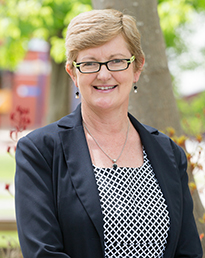
There is great enthusiasm across the Centre as our Ferguson Park explorations are deepening. The staff are sharing with me their interactions with the children as more regular visits are taking place. We are examining how the building of a strong connection with the space will assist children to understand more about what lives in the park, what they need to survive and the impact the living things have on each other. We are trying not to tell the children too much but rather wait for their discoveries, their observations and theories about living things and what they need. This is building the children’s ecological understandings and you will hear more about this as you read each room’s inquiry.
To go a little deeper we are endeavouring to build understandings about how the children can impact their future by being aware and enacting sustainable practices. I was delighted when having a conversation with one family during the week about their grandparents who are great recyclers. They have fantastic sustainable practices going on in their own backyard, including growing all their produce. We would love to hear about your practices in your families and if you can partner us in any way with the current learning. Our worm farms have been a very successful implementation and we are looking to continue to create real opportunities where the children are driving the practice rather than the adults. After all, children already have very strong natural curiosities about living things.
In contrast to this thinking, we reflect on some of our everyday practices that could be more closely examined and reviewed. For example, our lunch boxes are often filled with plastic wrappers that need to be thrown away, children often draw on paper, decide they don’t like it and throw it out. Our bins are quickly filled. What happens to all this waste? I was in the Hallett Room the other day and a group of children decided to use the recycled paper to make their paper aeroplanes. I questioned them and they were quick to tell me that the paper had many uses. I was very impressed with their analysis and later when speaking to Mrs Reid it was further explained how the children had arrived at this point. What impressed me was the teachers had not told the children that it was a waste of paper and that they should reuse it, but rather they had proposed a question that enabled the children to think more deeply for themselves – we call this type of thinking critical thinking, whereby solutions are generated from a problem and trialled to see if they can prove or disprove their theory.
I am sharing this focus with you, our adult community, this week so that you can become part of this exciting learning with your child and with your child’s room and Centre. It is not just one room that is giving attention to this but all rooms. When you hear about visits to the park, please invite your children to share their discoveries with you. We would love to add some home examples of our shared learning to our room learning. We look forward to hearing from you.
Kate Mount
Director of Early Learning
Absentee Contact Details
If your child is absent from the ELC please notify the School by 9.30am with the reason via:
Text 0428601957 or
email attendance@stpetersgirls.sa.edu.au
Save the Date
Grandparents and special friends
Afternoon Tea
Wednesday 13 September at 2pm
Father’s Day Breakfast
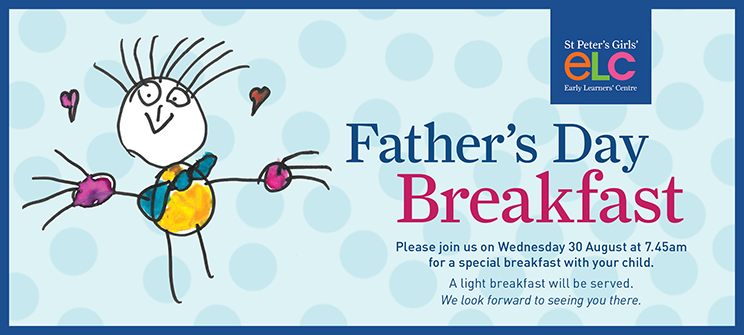
Wednesday 30 August 2017
Please join us at 7.45am for a special breakfast with your child.
A light breakfast will be served.
We look forward to seeing you there!
Enjoy a Twilight Tour of our Junior School
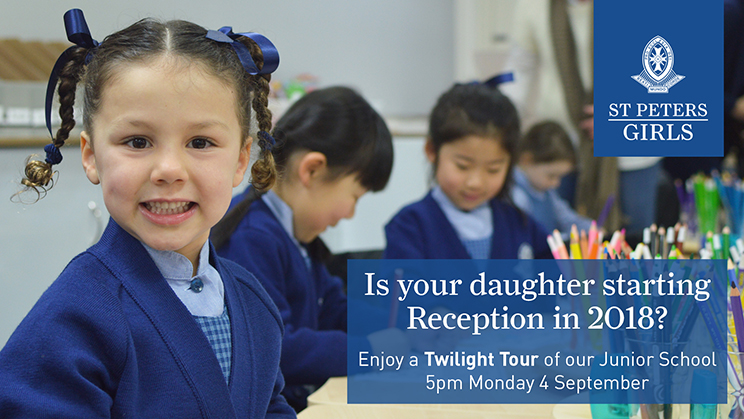
Wellbeing in Young Children
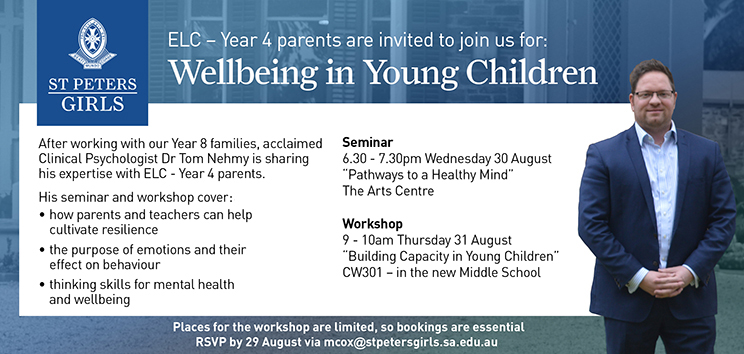
Welcome to Term 3 Morning Tea
The Friends of the ELC would like to thank all families who attended the recent Welcome to Term 3 Morning Tea.
A letter from Ms Qian
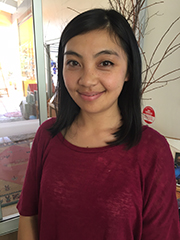 亲爱的家长:
亲爱的家长:
转眼已经步入新学期的第四周,我代表elc所有的老师们热烈欢迎这学期加入我们的新家庭!在前面的三周里,我们经历了小朋友从一开始的不适应到慢慢融入elc这个大家庭,这一切都在慢慢地过渡并走入平稳,我为所有新的小朋友和爸爸妈妈们感到骄傲!同时也要感谢在前三周中所有新家长的配合和理解,感谢已经在elc的家长和小朋友的支持和协助!无论您是elc多年的老朋友,还是刚加入这个大家庭的新成员,都欢迎您随时和我们沟通,有任何疑问或者建议请联系我(Ms Qian-Stonyfell Room) 或者直接联系您孩子所在班级的负责老师。 最后,季节变化,大家注意身体哦!
Ms Qian
Look at our Garden Grow!
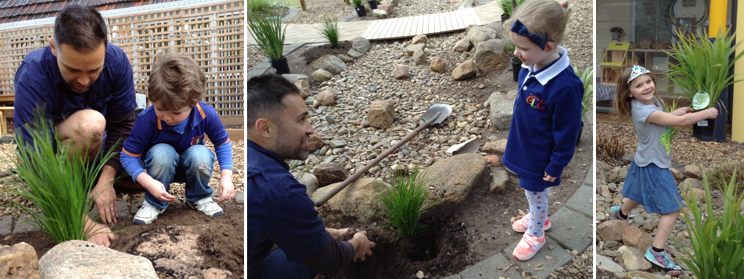
Last Friday our wonderful groundsmen Liam and Dom arrived in our ELC garden with a wheel barrow full of new plants. The children were very excited to find out where they would go and how they would be planted. Liam and Dom were more than happy to have helpers. Some children were reluctant to get their hands dirty but watched, fascinated, as holes were dug and roots were gently untangled.
“Ooh look, it’s a worm! Careful, we don’t want to squash it.”, exclaimed Penny. It is beautiful to hear the children express empathy for a little earthworm nestled in the roots of a new plant. Children learn much from the actions of adults and working beside Dom and Liam was a wonderful way for children to see respect and responsibility for the environment being modelled. The children will also have responsibilities in the coming weeks to ensure the plants adapt to their new homes by watering them and playing respectfully around them. This experience is another little step towards developing an ecological identity.
Mel Angel
News from the Stonyfell Room
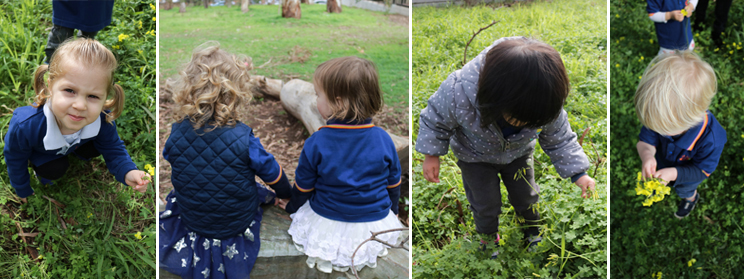
Building our sense of place – Connecting with Ferguson Park
“Children know how to live intimately in place; they allow themselves to be imprinted by place… They learn about place with their bodies and hearts.”
A. Pelo
During this term the Stonyfell Room children have begun accessing and exploring Ferguson Park. This natural bush reserve is in our ‘backyard’ and we are very fortunate to have this resource right at our finger tips. Through our inquiry this term we have a strong focus of developing a deep and meaningful connection to our natural environment. In order for our children to begin forming this authentic relationship with this place, we need to develop their sense of belonging to the park.
To truly connect with the park, we have been building our children’s sense of familiarity to the space. This has involved using this space every day. We have chosen to use the area just over our fence line. The children can still see the ELC building and visually understand that these two places are connected. During this time many things have occurred and the educators are taking the time to closely observe and document how the children are engaging with this space.
We ask ourselves:
• What are they observing?
• What senses are they using to observe and connect to this space?
• What questions are they asking?
As the weeks have progressed, the educators have thought how we can physically represent ourselves in the park. This provocation has led us to begin to collect the large white rocks located on the central path in the park. The children have gone to the park and worked in small groups with their buckets. They have worked together to fill the buckets and bring the rocks back to the ELC. Our next step is to paint these rocks in our ELC colours, which will be a visual representation for us to then place these back in the park.
Laura Reiters
News from the Bell Yett Room
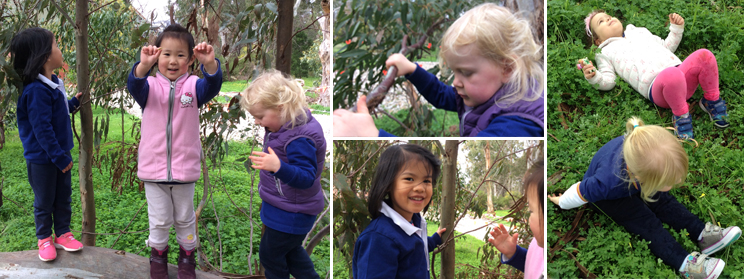 “Isn’t it lovely living here in Ferguson Park.” – Nina-Lucia
“Isn’t it lovely living here in Ferguson Park.” – Nina-Lucia
“Aimee, Hannah and me are best friends with the tree.” – Imogen
To support our intention of developing our ecological identities, we have been regularly visiting Ferguson Park. Our purpose for our initial visits was to give the children the opportunity to be introduced to, or reconnect with the park. We gave them the freedom to lead the way, while we observed the places and features that they were drawn to.
Back in the Bell Yett Room, we have been revisiting our explorations through the photographs and videos we have taken. This gives the children the opportunity to remember the experience, look at it more deeply and even reconsider it from another point of view. We often find children share more of their thoughts and ideas after the event and the photographs and videos support this.
It was during one of these revisits that Imogen was looking carefully at a photograph of her standing on a fallen log with some of her friends.
Imogen declared: “Aimee, Hannah and me are best friends with the tree.”
We were excited by Imogen’s feelings about the tree. We wondered if other children were developing similar connections to the park. We asked Imogen if we could share her thoughts at our Morning Meeting. We were mindful of not wanting to have too much influence over the children’s thinking so we considered her idea along with other photos and observations.
Upon our return to the park, Imogen and Hannah immediately returned to ‘the best friend tree’. Inspired by their delight in reconnecting with their ‘friend’, it wasn’t long before the other children began to explore the tree. The teachers observed the gentle touch the children had as they made contact with the tree and the way they used the tree as a trusted support for climbing and balancing.
At the same time, Elijah and Miranda discovered some small branches covered with brown leaves on the ground by ‘the best friend tree’. They were very concerned by this and felt that it was important to reattach the branches back on the tree. However, they then noticed something else. The leaves on the tree were green and the leaves on the ground were brown. They didn’t match and they didn’t belong together.
This has led to many children sharing their theories as to why some leaves are green and some are brown. We hope you have time to look at these photos and theories on display on the walls of the Bell Yett Room, and online on our Bell Yett Canvas page. We would also like to invite you to join us as we continue to explore Ferguson Park. If you have a spare half-hour in your day and you would like to join us for a walk, please let us know.
The Bell Yett Team
News from the Ferguson Room
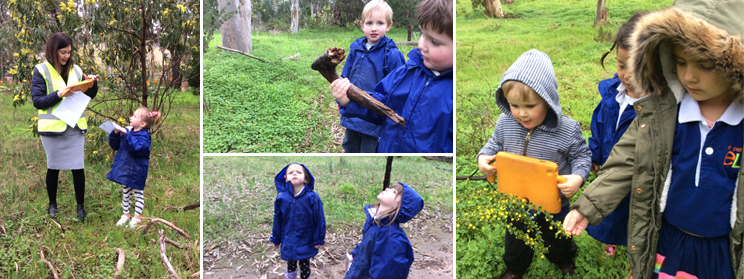
What are the skills and attributes our children will need to prepare for a changing landscape of employment? Research indicates that a capacity for critical thinking, collaboration and empathy for others will be high on the list.
This term our PYP Unit of Inquiry ‘Sharing the Planet’ perfectly positions us to develop these skills. Our underlying intention is to deepen our personal and collective identity as people whose relationship with the natural environment is one of connection, empathy and responsibility. You will have noticed the resident creatures we have in the Ferguson Room at the moment. The leaf and stick insects have left and been replaced by hermit crabs. Next week we will have a sleepy lizard. We also have a collection of butterfly specimens under glass that prompted a discussion among the children.
“Are they real?” – Mila
“They are real but not dead.” – Darcy
“Are they dead?” – Layla
“They are alive but not moving.” – Eoin
“The ones at the bottom are dead, the one’s at the top are not dead.” – Harry
“They are beautiful.” – Penny
“Insects don’t have friends. Little children need their mum and dad, but insects don’t”. – Hannah
“Don’t make loud noises near the pigeon, it will be scared.” – Ivy W
“My Daddy can help me get leaves for the leaf insects.” – Ivy C
These observations, questions, theories and discussions are evidence of children’s natural propensity for scientific thinking and thirst for knowledge. As educators our role is very different to what it once was. It is not enough for us to be providing children with answers and information. We have a responsibility to support children to engage in critical thinking and to develop an understanding of themselves as active learners, capable of researching, collaborating and discovering things for themselves.
With this in mind, we have been visiting Ferguson Park as often as possible and encouraging the children to explore. We are so fortunate to have this beautiful bush block right next door to our ELC. The children have been noticing and discovering a myriad of treasures including a secret garden, the rainbow lorikeet tree, a piece of wood shaped like a hammer, numerous holes of all shapes and sizes, leaves that have been nibbled by unseen creatures and an abundance of flowers in varying shades of yellow. These are a delight for all of the senses and further provocations for creative thinking and expression. On our return to the classroom, the children have made representations of their favourite things in the park and are also embarking on mapping the area to include all of these special landmarks. Thus our children are scientists, photographers, artists and cartographers as well as human beings experiencing joy and wonder at the beauty of the world around them.
This week we welcome several parents who have volunteered to join us on these excursions. Continuing these conversations at home is an important part of the learning process and we look forward to hearing about the dialogue you are having with your child beyond the school gate about their current experiences in the Ferguson Room.
Mel Angel
News from the Hallett Room
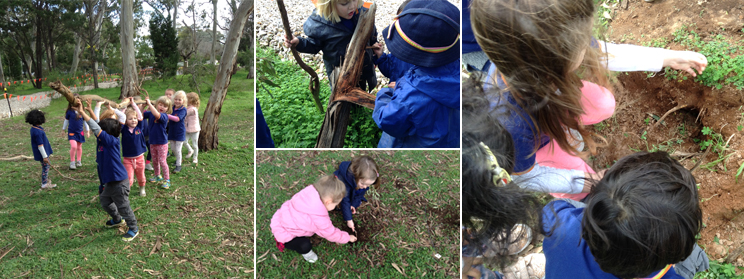
The Hallett Room is buzzing with excitement this week! Our regular walks to Ferguson Park, where we stay close to the ELC building, are giving us the opportunity to find the extraordinary in the ordinary. As different groups of children are intentionally grouped together, we see a range of explorations happening.
Some children are fascinated with the park – what lives there, what sounds they can hear, what they can feel and what they can smell. Some children are more cautious – observing their environment from a distance but still with a gentle curiosity. Other children explore the park physically – stomping through the grass, collecting sticks, making homes, pulling bark off the trees and out from the ground. And this is where the magic happens! The children begin to challenge one another, together creating their own discourse with differing ideas and theories.
“You can’t pull off bark.” – Winnie
“There’s animals on there!” – Macie
“If you pick up bark and you notice millipedes, then you should put the bark back down.” – Sophie H
“You have to stop and think before you pull off the bark.” – Poppy
“We are breaking our thank you.” – Charlie
“We will make the Kaurna people sad.” – Isobel
“If you see a millipede, don’t take them from their homes!” – Faith
“Picking flowers, then the flowers will die.” – Ava Conn
“The flowers will feel sad.” – Layla
“The bees won’t be able to make honey and fruit without flowers.” – Charlotte
“Without trees, we won’t have paper.” – Josh
“We have to re-use the paper, not take another piece.” – Adeline G
“I can talk to millipedes and ask them if they want to move home.” – Prabir
The children’s awareness of the amount of paper we use in the Hallett Room and their connection to the park is an important link for our ecological identities. Not only do we hope for children to understand that their actions have an impact on the environment, but we hope to foster a love for the environment that ensures the children will have an ongoing, self-driven responsibility to care for and protect it.
“To love a person or place is to take responsibility for its wellbeing.”
Kathleen Den Moore
Pam Reid
